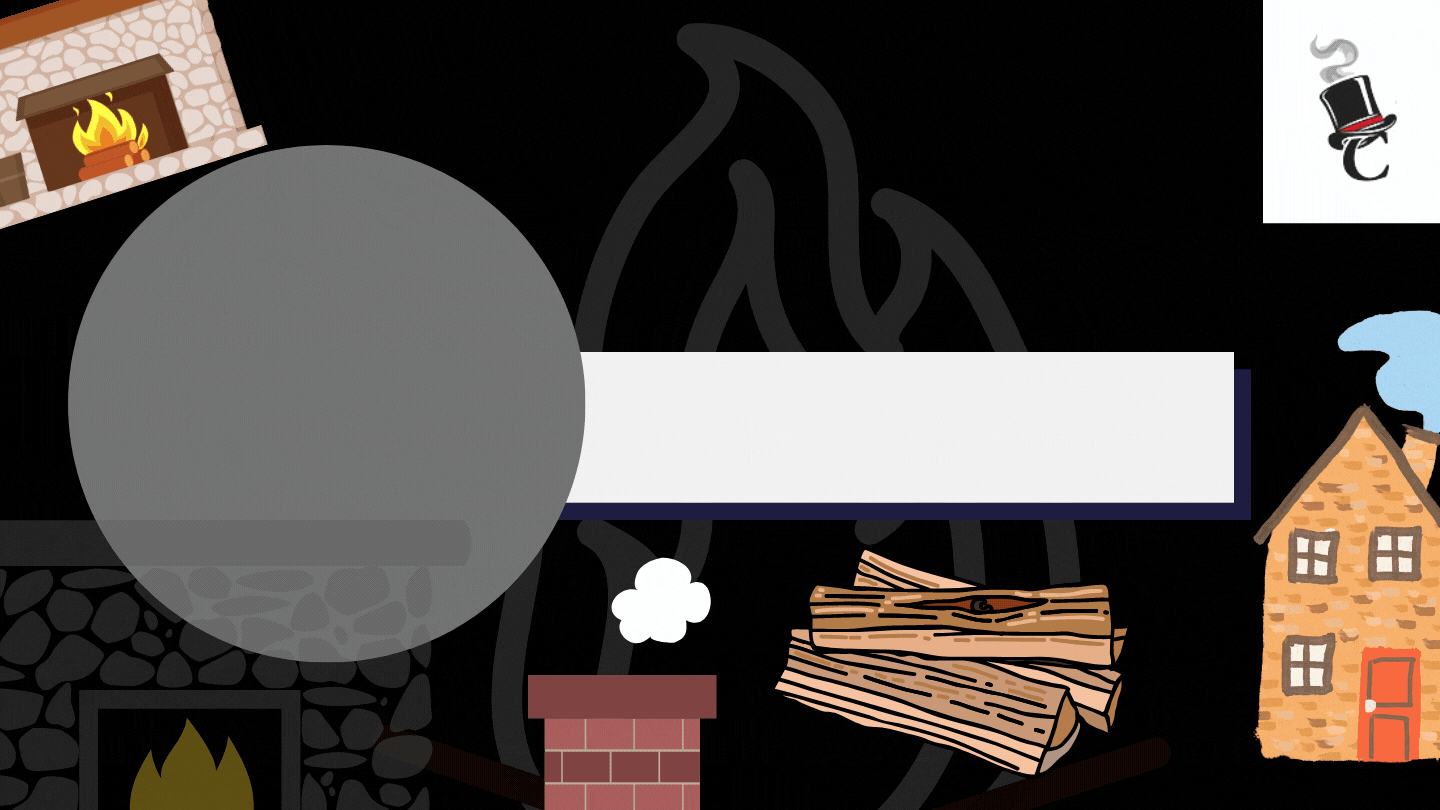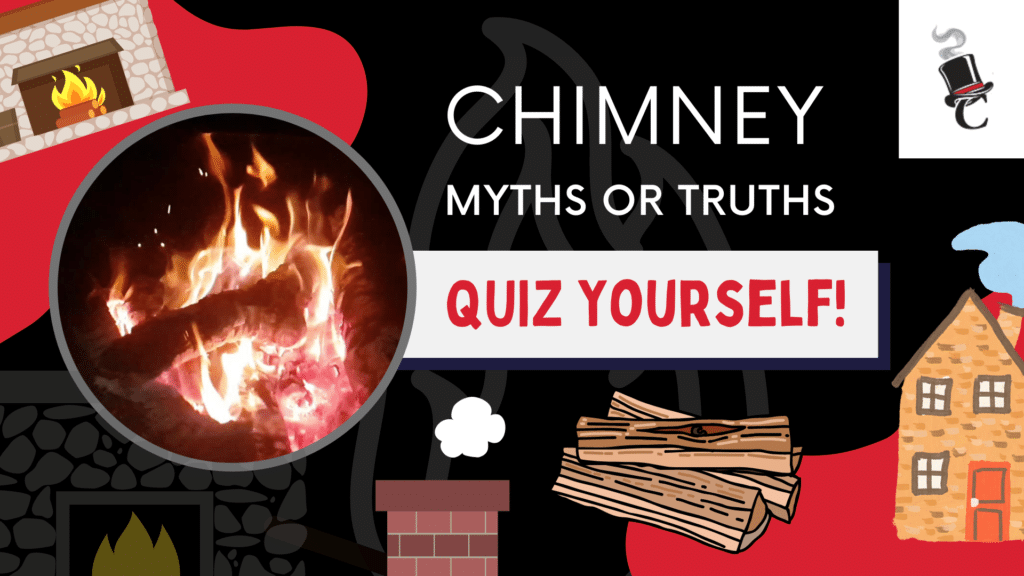
With colder weather rolling across the northern hemisphere, people will be considering more options to stay warm and cozy. You might have an old fireplace in the living room that’s been used as a place to hang a rug for the past few years. Other homeowners might not have a fireplace and are thinking of installing one. To see how much you know about chimneys, try taking this Myth or Truth quiz.
A chimney will outlive your home.
This myth is mostly true, but it depends on the chimney’s construction. A well-built masonry fireplace and accompanying chimney are as durable as any brick building, and it usually has the outer shell of the building to take the brunt of the environmental damage. The chimney will still degrade over time and need repairs to be functional and safe, but it’s not uncommon to see a brick chimney surrounded by ruins. Metal chimneys are also durable, but they can rust and take damage from the surrounding structure falling, so they aren’t quite as long-living.
Both are solid investments that will last long into future generations with a little bit of care.
Fireplaces and chimneys are dangerous.
A fireplace involves starting a fire inside of your home, so there is some degree of risk involved. You can greatly reduce that risk by making sure to have a fireplace and chimney that are built to regulations and providing them with regular maintenance and cleaning. Never leave an unattended fire in a fireplace. If you follow those rules, you can safely operate a fireplace with little worry.
Fireplaces are warm, cozy, and enjoyable.
If you’ve never cuddled around a fire on a cold winter night, you are missing out on one of the best experiences in the world. Add some hot cocoa, a book or a movie, and avoid all of the bitter chill while basking in comfort and company.
The room gets colder when you use a fireplace.
It may seem counterintuitive, but there are times when a fireplace will make your home cool down instead of warming it up. Fires consume oxygen, which means there is less air in the room. Gasses from nearby rooms waft into the now available space. If it’s the frigid air of an unheated room, it can cool the area around the fireplace faster than the heat from the fire radiates.
Animals love to nest in a chimney.
Critters love chimneys. They’re tall, dark, insulated, and safe. If left unused with an open top, you’ll likely end up with a nest in your chimney. It could be a bird looking for a spot to chirp, squirrels rummaging around and storing their nuts, or even snakes hunting for a warmer spot to survive a winter. This is dangerous for both the animal and your home, which is why most chimneys will have a guard around the opening. Smaller animals can still find a way into the flue, and the guard might take damage that allows larger ones to enter.
Chimney sweeping is an easy task that anyone can do.
It is possible for a homeowner to clean the chimney on their own or have a family member do it, but it is harder both physically and mentally than might be expected. The sweeping brush needs to make it through the entirety of the flue to clean the interior, so a climb on the roof is not uncommon. Some elbow grease is needed to get compacted residue away from the walls. Soot fills the air, and it can be rough on the lungs even with breathing protection.
Santa Claus comes down the chimney.
Despite the popularity of this belief, it is simply untrue with no basis in reality. Santa Claus is capable of gaining entry into homes of any type, as long as there are good children inside who want him to pay a visit around Christmas. A snack and a note left out for him are a reliable way to signal he’s welcome.
Burning softwoods is bad for your chimney.
An older myth says that softwoods will cause more creosote, the cooled residue of wood-burning smoke, inside the flue. This flammable gunk is part of why a regular chimney sweep is essential, but softwoods aren’t more likely to create creosote than hardwoods. Whether you use wood that is dry and seasoned or not is the real version of this myth. Like the original, it’s not that you can’t burn unseasoned or damp wood if necessary, but it will likely cause more creosote buildup.
A chimney needs to be swept every year.
This one is mostly true! Even if you’re not using the fireplace much or at all, it should get a yearly cleaning for random buildup and obstructions. If your fireplace gets regular use or you are forced to burn wet and unseasoned wood due to availability, you might want to have the chimney swept more frequently.
Fireplaces only need inspection after being used.
Damage can happen to a chimney from sources other than the fires inside of it. As was mentioned earlier, animals will see an unused chimney as free real estate. Moisture can also find a way inside cracks of the chimney’s masonry, then it might freeze when the weather gets cold. Since water expands when it gets cold, it can push the chimney apart over time. An earthquake could shift the chimney enough to cause damage. These and more can cause damage to the chimney that has nothing to do with your usage of it.
Fireplaces are inefficient at heating.
According to the EPA, traditional wood-burning fireplaces can be fairly inefficient at distributing heat. If you select a newer model like an EPA-certified stove or a gas log fireplace insert, you can dramatically increase the overall efficiency. For a wood-burning fireplace, a back plate can help radiate more of the heat out into the room. The plates can also have nifty designs that make the fire even more enjoyable.
Chimneys are expensive to build and maintain.
While not cheap, chimneys are not expensive relative to the other costs of building and maintaining a home. The type of chimney has a large impact on the cost, since a masonry chimney is more work than a metal pipe chimney. Stoves are also cheaper than a large masonry fireplace with accompanying chimney that has to be installed. Exact prices will depend on your location and the existing structure in the home.
For comparison, central heating installation will cost a little bit more than a masonry fireplace if you already have ductwork. The price jumps dramatically for larger homes when renovating is needed to install the system.
Chimney sweeps sing songs.
We can neither confirm nor deny that a chimney sweep near me might spontaneously burst into song while performing work.
You don’t need a fireplace if you have central heating.
While technically true, fireplaces can work alongside an existing central heating system. First, the fireplace can heat the primary space while the central heating keeps the rest of the home warm, reducing the cold draft effect. The crackle and smoke smells of a wood-burning fire are also a much different experience than the click and whirr of the central heating.
Gas log inserts look fake.
If your only experience with a gas log insert is an older model, you may think they look tacky and don’t get the job done. Newer versions have much more intricate designs, ranging from molds that look like a full campfire to shimmering stones that look like a magical pyre. They also burn much more efficiently than the older models.
There are no chimney sweeps near me.
Since chimney sweeps are frequently depicted in older settings within entertainment, it can be assumed that the job has faded over time. There are still plenty of chimney sweeps active and ready to get your flue looking new.
How Did You Do?
Whether you scored high or low, there is always more to learn about fireplaces, chimneys, and their maintenance. If you have questions about your fireplace or available services, contact a professional chimney sweeping and repair service today.
